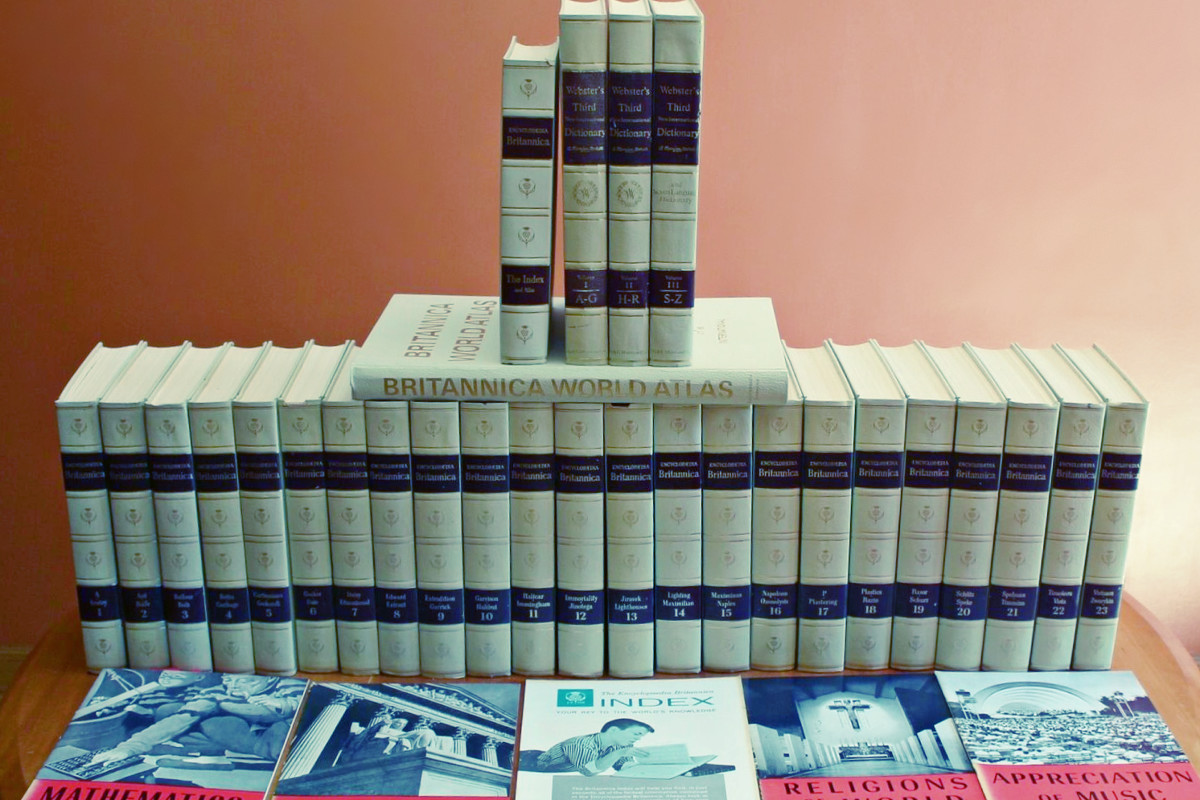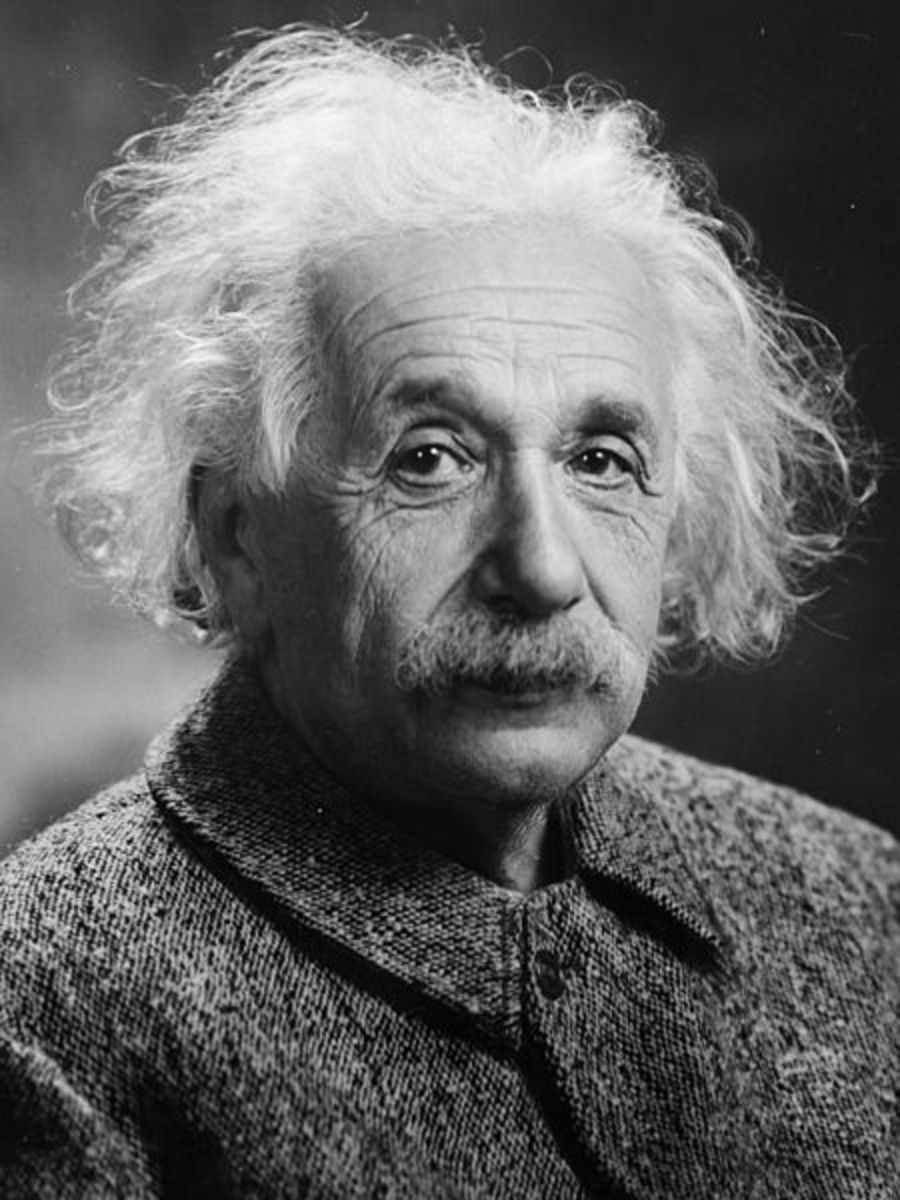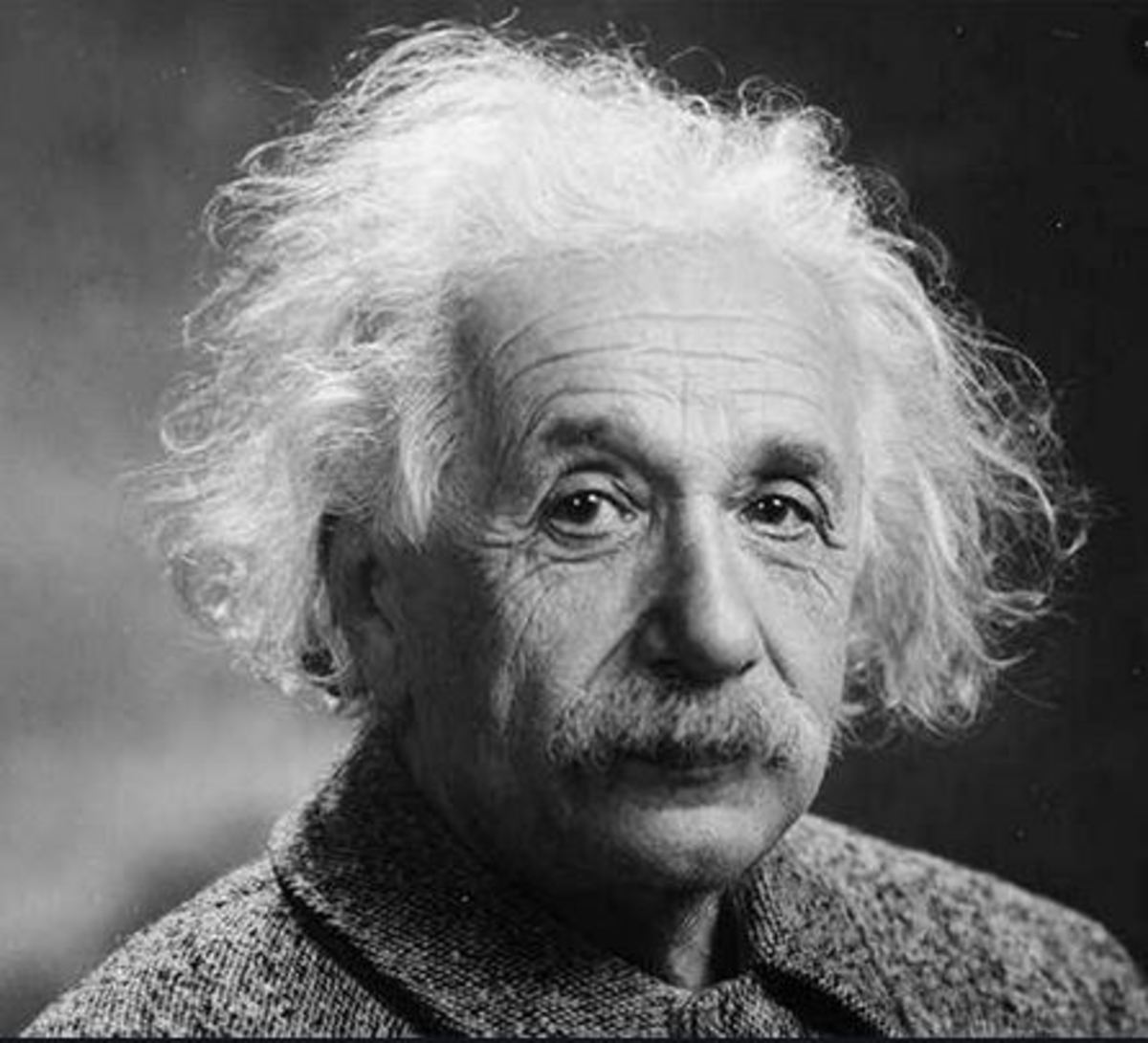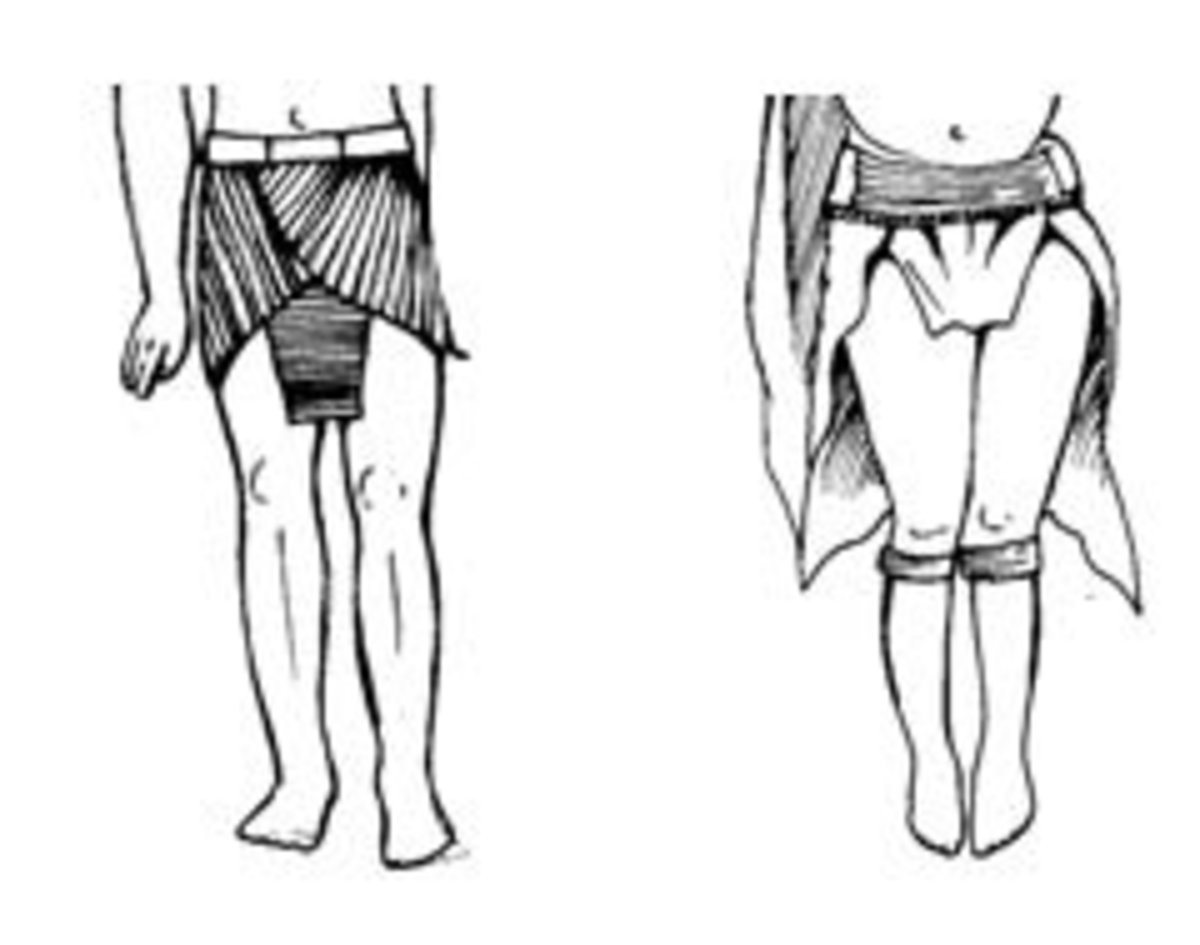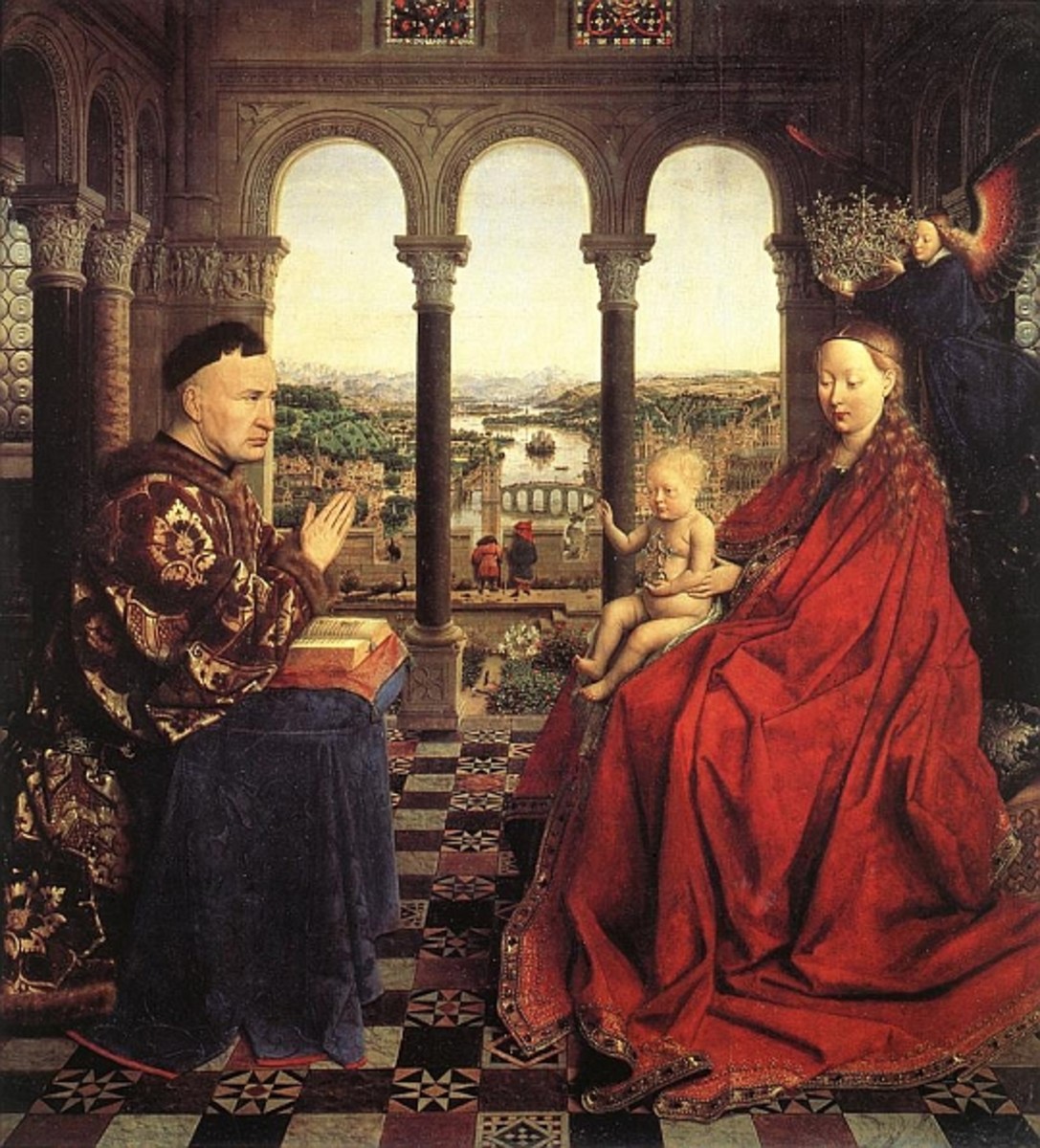Knowledge by Description Transfers Knowledge by Acquaintance
Maxwell's formula derived from Faraday's research results (Photo derived from Norman Campbell, What is science? 1921)
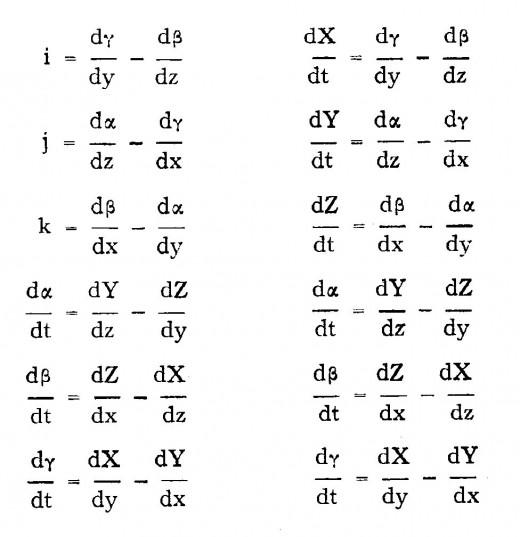
Knowledge by description and by acquaintance build and advance our body of knowledge
We generate, store, and transfer two kinds of knowledge: knowledge by description and knowledge by acquaintance.
Knowledge by description
“Atomic oxygen has eight electrons,” is an example of knowledge by description.
We start with common definitions (not technical) and will not go into origin of names.
An atom is the smallest unit of matter without an electrical charge.
Oxygen is an element, 16thin the periodic table, with eight electrons.
An electron is the carrier of negative charge in an atom and spins around the nucleus (except in hydrogen which has a proton but no nucleus).
A symbol or symbols are used in knowledge by description. Examples of symbols: a, ×, Ø , α, µ, ≥, ÷, red (as in traffic light). Words and terms are symbols. Anything that indicates another thing is a symbol. A flag is a symbol of a country. Symbols make up a description.
A description is either verifiable or not verifiable.
“The moon moves around the earth” is verifiable.
A description with a verifier is true.
A description without a verifier is false. For example, “The sun moves around the earth.” If we verify this description we find that the earth rotates around the sun.
However, “The sun moves around the earth” is meaningful. But this is another story. Suffice it to say that we can make meaningful descriptions and sentences that are not knowledge.
E = mc2 is knowledge by description. (Energy equals mass multiplied by speed of light squared). These symbols correspond to facts about the universe. That is, a description that corresponds to facts about the universe is knowledge.
What is meant by true? We use the correspondence theory of truth in our discussion.
“It seems natural to suppose, as non-Idealists usually do, that the consideration of two things in their relatedness to one another can have no effect on the things themselves—i.e., that a relation is something in addition to the things or terms related and is thus external. On this basis, truth would be defined as a relation of correspondence between a proposition and a state of affairs” (Encyclopedia Britannica 2009, emphasis supplied).
This theory of truth is in contrast with that of Thomas S. Kuhn. “Inspired by Kuhn's recognition of the social character of scientific knowledge (a paradigm is, after all, something that is shared by a community), a number of scholars proposed a more thoroughly sociological approach to science. Urging that beliefs acclaimed as “true” or “false” be explained in the same ways, they concluded that truth must be relativized to communities: a statement counts as true for a community just in case members of that community accept it” (Philip S. Kitcher, in: Encyclopedia Britannica 2009).
Kuhn’s concept of truth does not involve strict verification with fact. Take a similar case. In 1931, 100 scientists signed a manifesto denouncing Einstein’s theory of relativity in the context of anti-Semitism. Of course, these scientists were pressured by Hitler. But a community’s views could be spurred by forces (like economic) other than by a dictator. To his detractors Einstein, adhering to verifier(s) of a proposition, retorted: “to defeat relativity one did not need the word of 100 scientists, just one fact” (Encyclopedia Britannica 2009). That one fact may be: the speed of light is invariant.
The coherence theory of truth is different from the pragmatism theory of truth. I pick out one of six “major theses of philosophical pragmatism:”
“While most philosophers have defined truth in terms of a belief's “coherence” within a pattern of other beliefs or as the “correspondence” between a proposition and an actual state of affairs, Pragmatism has, in contrast, generally held that truth, like meaning, is to be found in the process of verification. Thus truth is the verification of a proposition, or the successful working of an idea. Crudely, truth is “what works.” (Thayer, H.S. Encyclopedia Britannica 2009).
What is a fact? A fact is undefined (Russell, B. Human Knowledge: Its Scope and Limits. 1947). We use a symbol or a description such that it corresponds to a fact. If a description corresponds to a fact it is a definite description. Bertrand Russell (British philosopher, mathematician and Nobel Prize winner in Literature) used the example “the present king of France” as a definite description saying that existence is asserted on a definite description. Therefore, a definite description is verifiable. Existence is not asserted on a name; asserting existence on a name results in a contradiction, Russell said.
Therefore, knowledge by description includes a definite description, a sentence (that is true), and a theory (that is true). “A theory that is true” is redundant. This is for the sake of popularized discussion. Technically, in science one starts out with a hypothesis like “The shape and size of poliovirus incites production of antibodies.” If this hypothesis is verified and is found to correspond to facts, then it becomes a theory. The general theory of relativity started out as a hypothesis. When one of its predictions like “The universe is expanding” was verified it became general theory of relativity. Edwin Hubble, an American astronomer, discovered the redshift which shows that the universe is expanding.
To take stock of where we are:
Knowledge by description consists of a true definite description, true sentence, and theory.
We must qualify true sentence further. We said a true sentence corresponds to a fact about the universe. What do we mean by fact about the universe? We encounter things in the universe like stone, cat, like, Wednesday, 2011 (the year), and 2 o’clock P.M. Stone and cat are obvious. But like, Wednesday and 2011 (the year), and 2 o’clock P.M. are not. Suppose you are responding to a questionnaire in semantic differential in evaluating a flower in a scale of 1 to 5. You check the space number 5. If the scale is “like strongly,” “like slightly,” “neither like nor dislike,” “dislike slightly,” “dislike strongly,” and “like strongly” has a score of 5, then you like the flower strongly. But how to verify that that is how you really feel? That is a question for the researcher in psychology. Suffice it to say that we have science of psychology and there is a body of knowledge in psychology. (I applied semantic differential in my college thesis.)
Wednesday, 2011 (the year), and 2 o’clock P.M. are conventions. These are peculiar to man who invented them; they do not indicate physical entities. Take Wednesday. If two men used the same calendar (by analogy) and they agree to meet next Wednesday they will meet each other because they agree on the meaning of Wednesday. We refer to Wednesday or 2011 or 2 o’clock or Greenwich Meridian Time as factoid.
Factoid is a term I borrowed from Norman Mailer who used it in a book he wrote on Marilyn Monroe.
Factoid is knowledge by description.
A constant that is agreed upon is knowledge by description. Take light. "In 1983 the 17th General Conference on Weights and Measures fixed the speed of light as a defined constant at exactly 299,792,458 metres per second. The metre became a derived unit, equaling the distance traveled by light in 1/299,792,458 of a second" (Encyclopedia Britannica 2009).
Year 2011 or 2 o’clock need further qualification. They are not real in the sense of a physical entity. They are time-like. Since we share the movement of the earth which is slow we think that they are real. In the relativity framework of space-time, there is physical entity called interval. A woman/man who travels as fast as the speed of light does not age. That is why year 1919 or 2011 does not matter to her/him.
A theory is knowledge by description. What is a theory?
A theory consists of concepts and relationship(s) between concepts (Einstein, A. Ideas and Opinions. 1954). For example, E = mc2. The concepts are energy, mass, speed of light. The relationships are equals, multiply and squared. This was only a hypothesis in 1906 (unverified) when Einstein issued it at the tail of the special theory of relativity published in 1905. The formula was verified first by Enrico Fermi and confirmed by the German physicists Lise Meitner and Otto Frisch in 1939 who called it fission which is the basis of the atomic bomb.
I have a Hub ‘A Theory That Explains Why The Salk Killed-virus Polio Vaccine Works” where I elaborated theory-making.
Knowledge by acquaintance
This is knowledge acquired through experience. It is behavior which includes speech, scribbling, and sign language. A child can have knowledge of making a fire with a match from her mother showing her by striking a matchstick. There can be knowledge by acquaintance without the use of symbol. A dog has knowledge of a cat by its chasing the cat. Russell says a cat has knowledge of the mouse by chasing the mouse. Knowledge by acquaintance can be converted into knowledge by description. First, an experience is assigned a symbol. For example, touch with your forefinger a candle fire and you have a sensation. Call that sensation “hot.” Touch the candle fire again and you feel the same sensation and call that same sensation “hot.” Repeat touching the candle fire about five times and feel the same sensation each time. The next time around when you say “hot” even without touching a candle fire you provoke the same sensation called “hot.” The association between the sensation and the word “hot” becomes fixed in your mind. By long education you can write the word “hot.”The word hot, whether read or heard, or thought of, now arouses the same sensation. This kind of conversion holds true in converting knowledge by acquaintance into knowledge by description. (We will not go into the niceties of learning how to talk, and learning how to write.)
The monk Mendel recorded what he did with peas. That is, his (Mendel’s) behavior in manipulating peas Mendel wrote.
“Gregor Mendel published his work in the proceedings of the local society of naturalists in Brünn, Austria (now Brno, Czech Republic), in 1866, but none of his contemporaries appreciated its significance. It was not until 1900, 16 years after Mendel's death, that his work was rediscovered independently by botanists Hugo de Vries in Holland, Carl Erich Correns in Germany, and Erich Tschermak von Seysenegg in Austria” (Encyclopedia Britannica 2009).
Knowledge by acquaintance is transferable by means of recorded experience (behavior converted into symbols) and by means of apprenticeship. Take Michael Faraday, a British chemist and physicist.
“Faraday received only the rudiments of an education, learning to read, write, and cipher in a church Sunday school….” He worked for a bookbinder as an apprentice at age 14 (Encyclopedia Britannica 2009).
To become a great chemist and physicist “…Faraday began as Davy's laboratory assistant and learned chemistry at the elbow of one of the greatest practitioners of the day….
“Faraday's second apprenticeship, under Davy, came to an end in 1820. By then he had learned chemistry as thoroughly as anyone alive. He had also had ample opportunity to practice chemical analyses and laboratory techniques to the point of complete mastery, and he had developed his theoretical views to the point that they could guide him in his researches….” (same source as above).
Knowledge by description and knowledge by acquaintance complement each other. However, in surgery knowledge by acquaintance takes primacy. In midwifery, assistance in delivering a baby is of prime importance. A midwife is capable of delivering a baby without talking, without assistance and without the use of a procedure manual.
We will not go into the nitty-gritty of how mental processes control behavior. Muscles can form a habit through practice like shooting a basketball the way Michael Jordan does.
Einstein formulated his special and general theories of relativity with the following knowledge by description: calculus (independently invented by Sir Isaac Newton and Leibniz), geometry (Euclid’s), Galilean transformation, Lorentz transformation (by Hendrik Antoon Lorentz, a Dutch physicist and Nobel laureate), speed of light (measured by Michelson and Morley), and Riemannian non-Euclidean geometry (developed by Bernhard Riemann).
Mathematics belong in knowledge by description. Mathematics does not indicate a physical entity but operations of the mind. Mathematics is logic. Bertrand Russell and Alfred North Whitehead co-authored a three-volume book "Principia Mathematica" (1910-13) where they showed that mathematics is reducible to logic. For example, zero. What does zero indicate? it does not indicate a physical entity. Russell and Whitehead say that zero is a class without a member. One, the number (1) is a class with a solitary member. Two, the number (2) is a class of couples.Three, the number (3) is a class of triplets. And so forth and so on. There are more classes than there are things. One can make a mathematical rule that three is a class of triplets. But one can also make a rule that three is a class consisting of the number of seats in a room; then manipulate classes according to a set of rules, say multiplication. Multiplication is consistent and rules of manipulation should never lead into a contradiction. You are not dealing with the seats (physical entity) but with the class (logic) of seats.
In a layman's language, mathematics is operation of the mind to deal with classes where entities are captured, as it were, and with rules of manipulation (like multiply, square, divide, plus, above, before, after, etc.).
Faraday and Maxwell showed a way of starting with physical entity, translate it to a mathematical formula, manipulate the formula, then derive a physical entity from the result of manipulation (saying it in a layman's language). Symbols in mathematics do not make any change on the property of the entity they classify. They facilitate manipulation. Riemann improved upon the Faraday-Maxwell method by further developing a non-Euclidean geometry. If not for Riemannian geometry, Einstein could never come up with the theory of gravity. Einstein used three Euclidean dimensions of space and one Riemannian dimension of time: the result is space-time. He says that gravity is a curvature in space-time.
Through knowledge by description and by acquaintance, Sir Arthur Eddington, a British astronomer, physicist and mathematician, confirmed “Einstein's theory that gravity will bend the path of light when it passes near a massive star” Encyclopedia Britannica 2009). Eddington “led an expedition to Príncipe Island (West Africa)” in 1919 to photograph a solar eclipse that showed such bending of light.
What about prediction? It is not knowledge. There are two kinds of statements of fact related to theory. One is “drawn statement of fact” the other is “prediction.”
Einstein said, in short, that the universe is expanding. He made this statement to provide a means to verify by experience his general theory of relativity which was expressed in mathematical language. The test of mathematics is validity. How do we know that a mathematical formula is true? Russell said a statement of fact predicted or drawn from the mathematical formula that relates to experience provides the proof. That is, when the statement of fact has or does not have a verifier. Einstein’s statement about the expansion of the universe was verified.
“The development of general relativity and its application to cosmology by Albert Einstein, Wilhelm de Sitter, and other theoreticians, along with the detection of extragalactic redshift (a shift to the longer wavelengths of light from galaxies beyond the Milky Way) by Vesto Slipher, led to the realization in the 1920s that all galaxies are receding. Edwin Hubble correlated these observations in mathematical form to provide evidence that the universe is expanding” (Encyclopedia Britannica 2009).
Einstein’s statement on the expansion of the universe was a “drawn statement of fact” because this expansion had been going on since the Big Bang over 13 billion years ago. A drawn statement of fact if true is knowledge.
What about prediction?
Faraday and James Clerck Maxwell provide an example. Faraday studied the behavior of electrons and recorded his results. Maxwell converted his results into mathematical formula, as follows: (Please see formula at the start of Hub)
Symbols on the left indicate electrical laws, Ampere’s law and Faraday’s law (Campbell, N. What is Science? 1921:154). Maxwell assigned mathematical symbols to Faraday’s physical ideas. That is to say, these symbols indicate some facts in the world. Faraday “... was the first to produce an electric current from a magnetic field, invented the first electric motor and dynamo, demonstrated the relation between electricity and chemical bonding....” (Encyclopedia Britannica 2008).
“The symbols i, j, k represent in those laws an electric current” (Campbell, N. What is Science? 1921: 155-156). The substitution of DX dY dZ for these dt dt dt symbols, describes a fact about the world: electromagnetic field.
An electric current produced in one place is duplicated in another place through space. This was a hypothesis or scientific guess made by Maxwell in 1870 that arose from his substitution. But Maxwell did not have the device to verify it. That device was invented by Heinrich Hertz.
“Maxwell's theory suggested that electromagnetic waves could be generated in a laboratory, a possibility first demonstrated by Heinrich Hertz in 1887, eight years after Maxwell's death. The resulting radio industry with its many applications thus has its origin in Maxwell's publications” (Encyclopedia Britannica 2008).
Maxwell’s prediction in 1870 is not knowledge.
But when Hertz had verified it in 1887, it became knowledge by description.
What about the use of nitroglycerin in treating angina pectoris or chest pain in a person with heart disease? Nitroglycerin had been successfully used along time ago but no one could explain its mechanism until the late 1990s.
Robert Furchgott knew that an endothelium-derived relaxation factor (ERDF) dilates coronary arteries. Ferid Murad discovered that nitric oxide is a messenger that dilates coronary arteries. Then Luis Ignarro showed that ERDF and nitric oxide are the same. These three shared the Nobel Prize in physiology in 1998 (Microsoft Encarta 2009).
"Nitroglycerin treats angina" before the medical research of Murad and Ignarro is knowledge inasmuch as nitroglycerin did in fact alleviate angina. The work of Furchgott, Murad and Ignarro provide the concepts and relationships that go into a theory on treatment of angina. That theory is another knowledge by description.
Knowledge by description and by acquaintance build and advance our body of knowledge.



